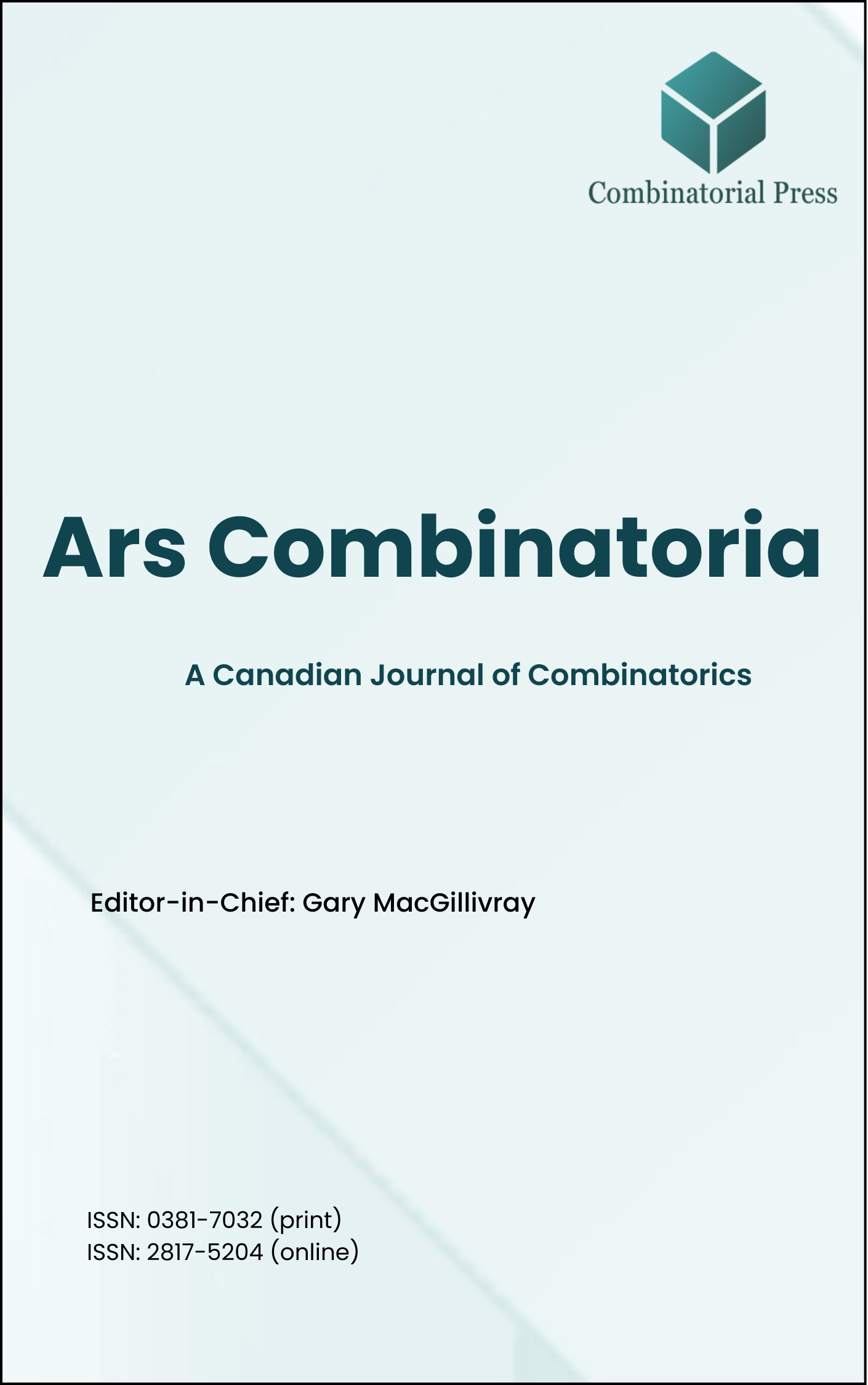
Ars Combinatoria
ISSN 0381-7032 (print), 2817-5204 (online)
Ars Combinatoria is the oldest Canadian Journal of Combinatorics, established in 1976. The journal is dedicated to advancing the field of combinatorial mathematics through the publication of high-quality research papers. From 2024 onward, it publishes four volumes per year in March, June, September and December. Ars Combinatoria has gained recognition and visibility in the academic community and is indexed in renowned databases such as MathSciNet, Zentralblatt, and Scopus. The Scope of the journal includes Graph theory, Design theory, Extremal combinatorics, Enumeration, Algebraic combinatorics, Combinatorial optimization, Ramsey theory, Automorphism groups, Coding theory, Finite geometries, Chemical graph theory but not limited.
Information Menu
- Research article
- https://doi.org/10.61091/ars158-05
- Full Text
- Ars Combinatoria
- Volume 158
- Pages: 35-40
- Published: 31/03/2024
A linear system is a pair
- Research article
- https://doi.org/10.61091/ars158-04
- Full Text
- Ars Combinatoria
- Volume 158
- Pages: 27-33
- Published: 31/03/2024
We classify all near hexagons of order
- Research article
- https://doi.org/10.61091/ars158-03
- Full Text
- Ars Combinatoria
- Volume 158
- Pages: 19-26
- Published: 31/03/2024
Let
- Research article
- https://doi.org/10.61091/ars158-02
- Full Text
- Ars Combinatoria
- Volume 158
- Pages: 11-17
- Published: 31/03/2024
In this paper, we investigate the
- Research article
- https://doi.org/10.61091/ars158-01
- Full Text
- Ars Combinatoria
- Volume 158
- Pages: 3-10
- Published: 31/03/2024
By employing Kummer and Thomae transformations, we examine four classes of nonterminating
- Research article
- https://doi.org/10.61091/ars157-14
- Full Text
- Ars Combinatoria
- Volume 157
- Pages: 143-157
- Published: 25/12/2023
Let
- Research article
- https://doi.org/10.61091/ars157-13
- Full Text
- Ars Combinatoria
- Volume 157
- Pages: 133-141
- Published: 25/12/2023
We define an extremal
- Research article
- https://doi.org/10.61091/ars157-12
- Full Text
- Ars Combinatoria
- Volume 157
- Pages: 121-131
- Published: 25/12/2023
A dominating broadcast of a graph
- Research article
- https://doi.org/10.61091/ars157-11
- Full Text
- Ars Combinatoria
- Volume 157
- Pages: 109-120
- Published: 25/12/2023
In this paper we introduce the concept of independent fixed connected geodetic number and investigate its behaviours on some standard graphs. Lower and upper bounds are found for the above number and we characterize the suitable graphs achieving these bounds. We also define two new parameters connected geo-independent number and upper connected geo-independent number of a graph. Few characterization and realization results are formulated for the new parameters. Finally an open problem is posed.
- Research article
- https://doi.org/10.61091/ars157-10
- Full Text
- Ars Combinatoria
- Volume 157
- Pages: 95-108
- Published: 25/12/2023
Let





